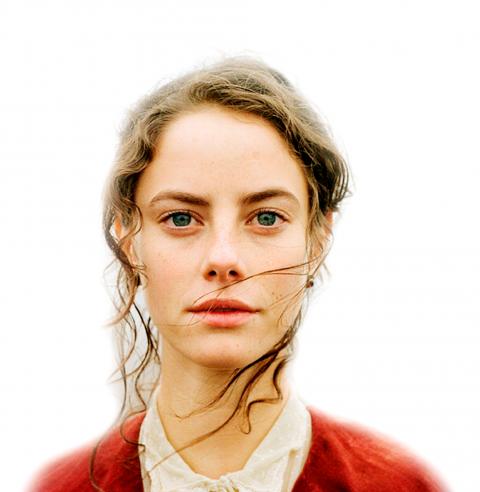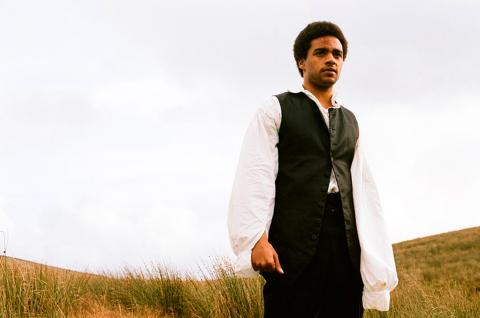There have been at least 14 adaptations of Emily Bronte’s novel Wuthering Heights for cinema and television dating back to 1920. The best known version is probably the 1939 classic with Laurence Olivier and Merle Oberon, which owed much of its success to the omission of almost half the tale.
Since then, there have been numerous television dramas, which have done more or less justice to the complete story, but have seldom escaped the framework of British period drama, often owing more to the spirit of Jane Austen than the wild, fevered imaginings of Bronte’s novel. A recent attempt to put the whole complex story onto the big screen, released in 1992, met with a lukewarm reception despite the presence of A-listers Juliette Binoche and Ralph Fiennes in the key roles.
Andrea Arnold’s new art house production has gone back to the tried and tested 1939 model, heavily pruning the second half of the tale and focusing primarily on the ill-starred love between the outsider Heathcliff and the flighty beauty Catherine Earnshaw. In virtually every other respect, Arnold has embarked on a bold new path. She takes considerable risks, and for the first half of the film, her approach generates plenty of excitement for its innovative presentation of a familiar tale.

Photo courtesy of CatchPlay
The first thing that you notice is the unconventional 1.33:1 aspect ratio, which seems almost square to the now conventional 1.85:1 widescreen format. This narrow frame is effectively used to tightly crop images, giving a sense of confinement that mirrors the emotional and physical constraints of the characters’ existence. In the opening hour of the film it is used to great effect, emphasizing the brutality and barely controlled passions of the Earnshaw household where Catherine and Heathcliff, a waif brought home by Catherine’s father in a fit of somewhat misguided Christian charity, meet and fall in love.
The second point that immediately strikes the viewer is that Heathcliff is black. Heathcliff is an outcast, and at one point in the novel is described as a “lascar,” and repeatedly as a “gypsy,” though his ethnicity is never clear. Directors have generally been content to portray Heathcliff as dark haired, in contrast to the blond Lintons, the family into which Catherine eventually marries and towards which Heathcliff harbors an enduring hatred. In casting black actors for the role, first Solomon Glave as the young Heathcliff, and subsequently James Howson, Arnold clearly has a point to make about racial discrimination (the discrimination in the novel is class based), but this in itself doesn’t really take the material anywhere new.
What is effective and interesting is the portrayal of Heathcliff as a victim. Rather than some kind of elemental wild thing, Arnold makes Heathcliff more a passive figure whose acts of cruelty are ultimately as small-minded and vicious as the ill treatment he receives from those around him. This departure seems to open up the story to new interpretations. Glave’s demeanor of aggrieved insolence works well as a counterpoint to Catherine’s teasing sense of her own sexual power, and the two build up an interesting dynamic. This is accentuated by Arnold’s cinematic technique, with regular use of choppy handheld camera, super close-ups to create almost abstract images, and seemingly random cuts to images of plants and insects of the Yorkshire moors. There are some memorable moments, such as a shot of Heathcliff sitting behind Catherine on a horse, the camera zooming in on her neck and hair: the sense of ecstatic intimacy and sensuality is strongly conveyed.

Photo courtesy of CatchPlay
While Glave is convincing enough, and Shannon Beer as the girl Catherine is a joy to watch, their counterparts as adults, James Howson and Kaya Scodelario fail to carry the passion into the second half of the film. The transition is problematical even in the novel, as a gothic image of unbridled passion gets tangled up in a tale of the long drawn-out revenge of Heathcliff against those who he views as his enemies. The situation is made worse in the film as Howson runs into the impossibility of being both the sad-sack victim and an angle of vengeance both at the same time.
As Arnold tries to wrap up the truncated ends of her story, much of the visual inventiveness seems to disappear from the film as well. She leaves the threads of romance hanging and shifts her focus back to the theme of oppression, seeming to suggest with her final scenes the idea that brutality breeds new oppressors. That’s all well and good, but what happened to the tale of transcendent love?
There is much to be admired in Arnold’s film, and for those familiar with the book it provides some interesting new perspectives. Unfortunately, it tries to achieve too many often incompatible goals, and the last third of the film is something of a trial to watch, as Arnold’s inventiveness has largely run out of steam and the performances are not strong enough to carry the story. At the end of the 129-minute running time one thinks fondly on the most succinct, though far from the least powerful interpretation of Wuthering Heights, the 1978 song by Kate Bush, which clocks in at just under five minutes.

April 14 to April 20 In March 1947, Sising Katadrepan urged the government to drop the “high mountain people” (高山族) designation for Indigenous Taiwanese and refer to them as “Taiwan people” (台灣族). He considered the term derogatory, arguing that it made them sound like animals. The Taiwan Provincial Government agreed to stop using the term, stating that Indigenous Taiwanese suffered all sorts of discrimination and oppression under the Japanese and were forced to live in the mountains as outsiders to society. Now, under the new regime, they would be seen as equals, thus they should be henceforth

Last week, the the National Immigration Agency (NIA) told the legislature that more than 10,000 naturalized Taiwanese citizens from the People’s Republic of China (PRC) risked having their citizenship revoked if they failed to provide proof that they had renounced their Chinese household registration within the next three months. Renunciation is required under the Act Governing Relations Between the People of the Taiwan Area and the Mainland Area (臺灣地區與大陸地區人民關係條例), as amended in 2004, though it was only a legal requirement after 2000. Prior to that, it had been only an administrative requirement since the Nationality Act (國籍法) was established in

With over 100 works on display, this is Louise Bourgeois’ first solo show in Taiwan. Visitors are invited to traverse her world of love and hate, vengeance and acceptance, trauma and reconciliation. Dominating the entrance, the nine-foot-tall Crouching Spider (2003) greets visitors. The creature looms behind the glass facade, symbolic protector and gatekeeper to the intimate journey ahead. Bourgeois, best known for her giant spider sculptures, is one of the most influential artist of the twentieth century. Blending vulnerability and defiance through themes of sexuality, trauma and identity, her work reshaped the landscape of contemporary art with fearless honesty. “People are influenced by

The remains of this Japanese-era trail designed to protect the camphor industry make for a scenic day-hike, a fascinating overnight hike or a challenging multi-day adventure Maolin District (茂林) in Kaohsiung is well known for beautiful roadside scenery, waterfalls, the annual butterfly migration and indigenous culture. A lesser known but worthwhile destination here lies along the very top of the valley: the Liugui Security Path (六龜警備道). This relic of the Japanese era once isolated the Maolin valley from the outside world but now serves to draw tourists in. The path originally ran for about 50km, but not all of this trail is still easily walkable. The nicest section for a simple day hike is the heavily trafficked southern section above Maolin and Wanshan (萬山) villages. Remains of